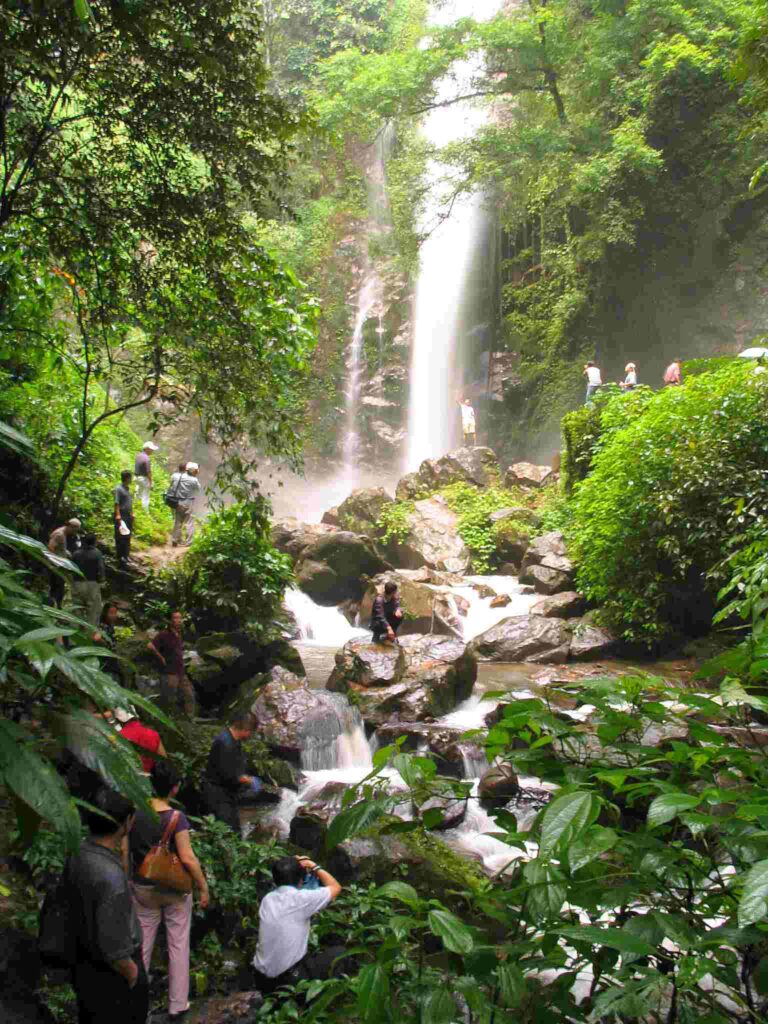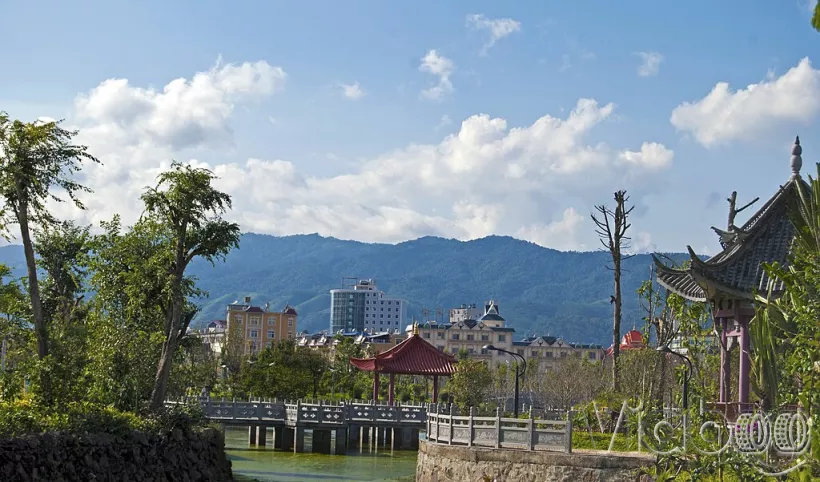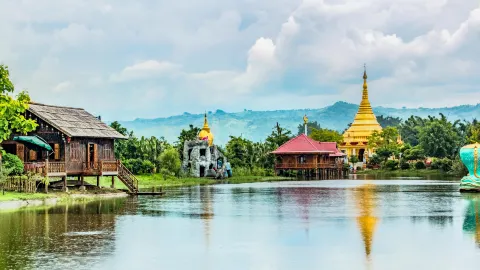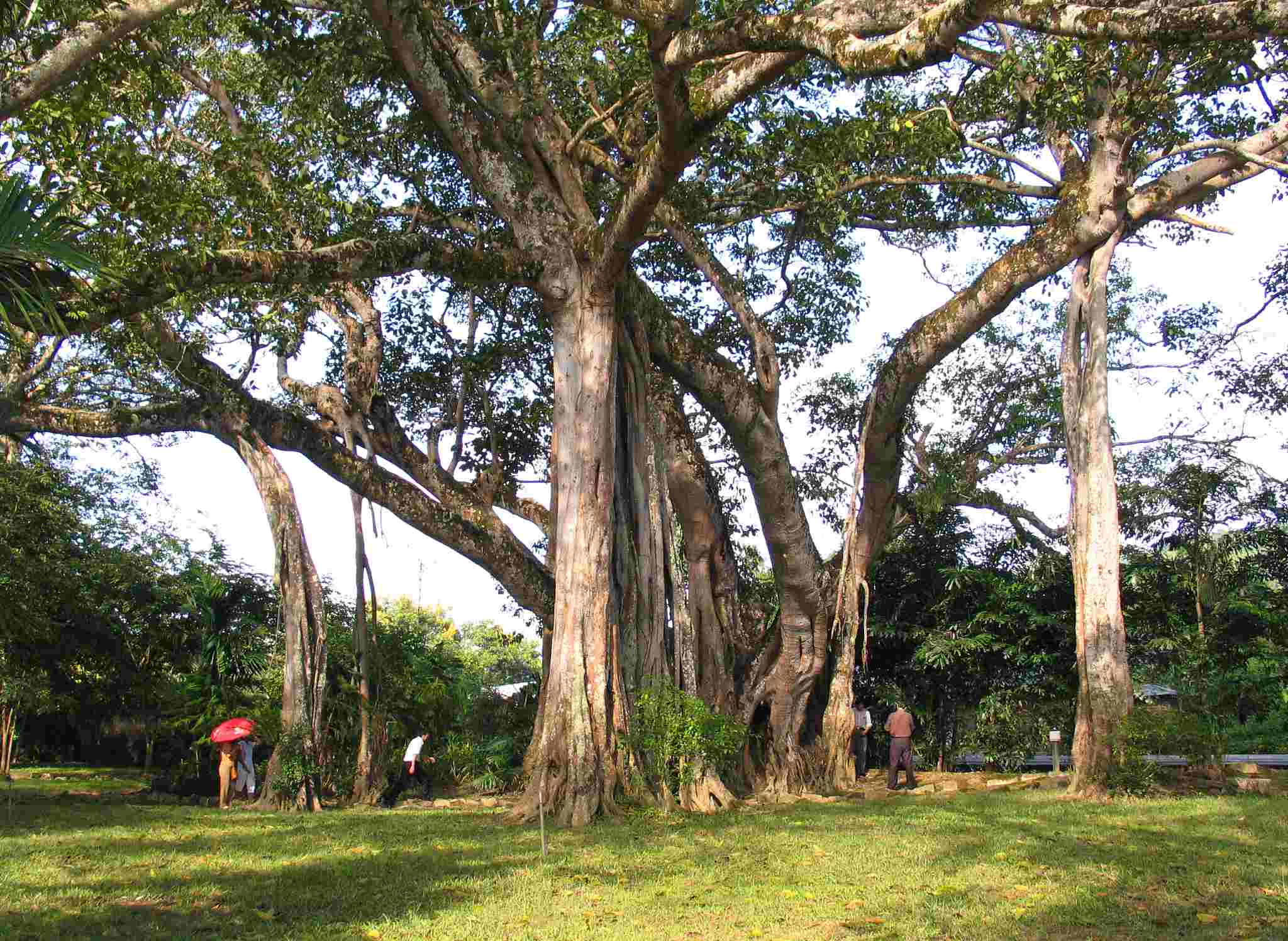Unveiling the Hidden Gems of Ruili Border Cultural Park

An Essential Guide to Visiting Ruili Border Cultural Park
Nestled in the vibrant city of Ruili, where the borders of China and Myanmar meet, lies the Ruili Border Cultural Park—a captivating haven for travelers eager to immerse themselves in the rich tapestry of cultures that define this unique region. This park serves as a living testament to the area’s diverse ethnic heritage, featuring a harmonious blend of traditional Dai, Jingpo, and other minority customs that breathe life into every corner of the park.
As you stroll through its lush pathways, you will encounter stunning displays of local craftsmanship, lively markets filled with exotic goods, and authentic culinary delights that tantalize the senses. Whether you’re exploring the intricacies of jade processing, engaging with friendly locals, or simply enjoying the tropical ambiance, the park offers an enchanting experience that resonates with the spirit of this borderland.
Prepare to embark on a journey that transcends geographical boundaries, revealing the intricate connections forged through culture, trade, and history. Ruili Border Cultural Park is not just a destination; it’s an invitation to discover the heart of a region where tradition and modernity coexist in a vibrant dance.
In This Guide
- An Essential Guide to Visiting Ruili Border Cultural Park
- The Rich History and Legends of Ruili Border Cultural Park
- Main Highlights: What You Absolutely Can’t Miss
- Planning Your Visit: A Practical Guide
- Tickets: Prices, Booking, and Tips
- How to Get There: A Complete Transportation Guide
- Local Cuisine and Accommodation Nearby
- Frequently Asked Questions
- Final Thoughts on Your Trip
The Rich History and Legends of Ruili Border Cultural Park
Nestled in the vibrant city of Ruili, the Ruili Border Cultural Park serves as a testament to the rich tapestry of history and legends that define this unique region. The park is not just a recreational space; it embodies the intersection of cultures, particularly between China and Myanmar, and celebrates the diverse heritage of the area’s ethnic groups, including the Dai and Jingpo.
Historically, Ruili has been a significant point of contact between two nations. Its strategic location along the China-Myanmar border has facilitated trade and cultural exchange for centuries. The park itself is built upon the remnants of this long-standing relationship, showcasing artifacts and exhibits that highlight the traditions and customs of the local communities. Visitors can explore various pavilions that narrate the story of the border’s evolution, from a bustling trade route to a thriving cultural hub.
Legends abound in the narratives shared within the park’s grounds, many of which are steeped in the folklore of the region. One such tale revolves around the mythical origins of jade, a precious stone that has been revered in Chinese culture for millennia. According to local legends, jade was believed to be a gift from the heavens, symbolizing purity and nobility. This belief is reflected in the park’s exhibits, which feature stunning jade sculptures and historical accounts of jade crafting, an art form that remains integral to Ruili’s identity.
The cultural park also serves as a stage for traditional festivals and events, where visitors can witness the vibrant performances of local musicians and dancers. These celebrations often incorporate stories from the past, bringing the legends of Ruili to life through song and dance. Such events not only honor the region’s heritage but also foster a sense of community among the diverse populations that call Ruili home.
In addition to its historical and cultural significance, the park is a sanctuary for those looking to escape the hustle and bustle of everyday life. With its lush greenery and tranquil atmosphere, it invites visitors to reflect on the stories that have shaped this border town. Whether it’s wandering along the scenic pathways, marveling at the intricate designs of ethnic handicrafts, or simply enjoying the serenity of the natural surroundings, the Ruili Border Cultural Park offers a unique glimpse into the heart and soul of a region rich in history and legend.
As you stroll through the park, you’ll not only gain insight into the past but also appreciate the vibrant present of Ruili, a place where history continues to unfold, and where the spirits of ancient legends linger in the air.

Ruili Border Cultural Park.
Main Highlights: What You Absolutely Can’t Miss
Ruili Border Cultural Park is a vibrant tapestry of cultures, history, and natural beauty located at the confluence of China and Myanmar. This unique destination is not only a significant border crossing but also a melting pot of traditions, making it a must-visit for international travelers seeking an immersive experience. Here are the main highlights you absolutely can’t miss during your visit.
1. Cultural Fusion at the Chinese-Burma Friendship Street
Stroll down Chinese-Burma Friendship Street to experience the fascinating blend of cultures. This lively area is lined with shops and stalls offering a variety of goods, from traditional handicrafts to vibrant textiles. Engage with local vendors, sample Burmese delicacies, and take in the eclectic mix of architectural styles that echo the region’s rich history.
2. Wanding Bridge: A Historical Landmark
No trip to Ruili would be complete without a visit to the Wanding Bridge. This bridge serves as a crucial link between China and Myanmar and is steeped in historical significance. Not only is it a picturesque spot for photographs, but it also offers a unique perspective on the bustling border trade and the vibrant life that exists on both sides of the river.
3. Exploring the One Tree Forest
Venture into the One Tree Forest, a tranquil haven featuring stunning banyan trees and lush greenery. The park provides a serene environment perfect for picnics or leisurely walks. Here, you can enjoy the local flora and fauna, and perhaps even purchase beautiful wood crafts and jade products from nearby vendors.
4. Wanding Ecological Park: Nature’s Embrace
Escape the urban hustle at Wanding Ecological Park, where you can immerse yourself in the natural beauty of the area. This park features scenic walking paths, diverse plant life, and peaceful spots for relaxation. It’s a wonderful place to observe local wildlife and appreciate the ecological diversity that this region has to offer.
5. The Gem-Washing Field: A Glimpse into Local Industry
Discover the art of jade processing at the Touring and Gem-washing Field. This unique attraction allows visitors to see how raw jade is transformed into beautiful jewelry. You can learn about the local jade industry and even browse through exquisite pieces crafted by skilled artisans. It’s a great opportunity to take home a piece of Ruili’s heritage.
6. Night Markets: A Feast for the Senses
As the sun sets, make your way to Ruili’s night markets. These vibrant markets come alive with the sounds and aromas of local street food. Sample a variety of dishes, from spicy noodles to fresh fruit, and experience the lively atmosphere filled with music and laughter. This is the perfect way to end a day of exploration.
7. Cultural Events and Festivals
Check the local calendar for cultural events and festivals that may coincide with your visit. Ruili hosts various celebrations throughout the year that showcase its rich ethnic heritage, including traditional music, dance, and culinary delights. Participating in these events offers a deeper understanding of the local culture and community.
8. Dai and Jingpo Cultural Experiences
Engage with the local ethnic groups, particularly the Dai and Jingpo communities. You can visit traditional villages to learn about their customs, crafts, and daily life. These interactions provide a unique insight into the rich cultural mosaic that defines Ruili.
Conclusion
Ruili Border Cultural Park is not just a destination; it is an experience that encapsulates the spirit of cross-cultural exchange. From historical landmarks to natural beauty and vibrant markets, this park is a treasure trove waiting to be explored. Whether you’re seeking adventure, cultural immersion, or simply a relaxing getaway, Ruili promises to be a memorable stop on your travels.

Ruili Border Cultural Park.
Planning Your Visit: A Practical Guide
Ruili Border Cultural Park offers a unique glimpse into the vibrant tapestry of cultures found at the intersection of China and Myanmar. As you plan your visit, here are essential tips to make the most of your experience.
Getting There
Ruili is well-connected and accessible through various modes of transportation:
- By Air: The nearest airport is Ruili Airport, which has limited domestic flights. For international travelers, flying into Kunming Changshui International Airport and taking a bus or train to Ruili is the most feasible option.
- By Train: High-speed trains from Kunming to Ruili provide a comfortable and efficient travel option, with frequent departures throughout the day.
- By Bus: Regular buses operate from major cities in Yunnan, including Kunming. The journey offers scenic views, making it a preferred choice for budget travelers.
- By Car: If you prefer driving, renting a car allows for flexibility. The roads are generally good, but be cautious of local driving habits.
Best Time to Visit
Ruili experiences a tropical climate, making it a year-round destination. However, the ideal time to visit is from October to April when temperatures are milder and rainfall is minimal. The summer months (June to September) can experience heavy rains, potentially affecting outdoor activities.
Accommodation
Ruili offers a variety of accommodation options to suit different budgets:
- Hotels: From luxury hotels to budget-friendly options, you can find a comfortable place to stay. Popular choices include hotels near the city center for easy access to attractions.
- Guesthouses and Homestays: For a more local experience, consider staying in a guesthouse or homestay where you can interact with local families and learn about their customs.
- Hostels: Backpackers and solo travelers can find affordable hostels with communal spaces to meet fellow travelers.
Exploring the Park
The Ruili Border Cultural Park is a focal point for cultural exchange. Here are a few highlights:
- Cultural Exhibitions: The park hosts various exhibitions showcasing the rich heritage of the local Dai, Jingpo, and other ethnic groups. Look for events that may coincide with your visit.
- Shopping: Explore the vibrant markets within the park where you can purchase traditional handicrafts, jade items, and local textiles. Bargaining is common, so don’t hesitate to negotiate prices.
- Dining: Sample authentic local cuisine at food stalls or nearby restaurants. Don’t miss out on trying dishes like Dai-style grilled fish or tropical fruits.
Transportation Within Ruili
Getting around Ruili is relatively easy:
- Public Buses: Local buses are an affordable way to navigate the city. Check the schedules and routes available at your accommodation.
- Taxis and Ride-Sharing: Taxis are readily available, and ride-sharing apps can provide convenient transport options.
- Bicycle Rentals: For an eco-friendly way to explore, consider renting a bicycle to enjoy the sights at your own pace.
Safety and Tips
- Stay Informed: Ruili is a border town, so keep an eye on local news and travel advisories, especially regarding border crossing regulations.
- Stay Hydrated: The tropical climate can be hot and humid, so drink plenty of water throughout the day.
- Cash is King: While digital payments are becoming more common, having cash on hand is advisable, especially for small vendors and markets.
Conclusion
With its rich cultural heritage and scenic beauty, Ruili Border Cultural Park is a destination that invites exploration and discovery. Whether you’re indulging in local delicacies, engaging with the vibrant market scene, or simply soaking up the unique atmosphere, your visit promises to be an unforgettable adventure.

Ruili Border Cultural Park.
Tickets: Prices, Booking, and Tips
When planning your visit to the Ruili Border Cultural Park, it’s important to know the ticketing details to ensure a smooth and enjoyable experience.
Ticket Prices
Admission to the Ruili Border Cultural Park is quite affordable, with tickets priced at approximately 10 Yuan (around $1.50 USD). This nominal fee allows you access to a variety of attractions within the park, including the scenic landscapes, cultural displays, and unique architectural features that reflect the rich heritage of the region.
Booking Tickets
Purchasing tickets at the entrance is straightforward, and you can pay in cash or through mobile payment apps, which are widely used in China. If you prefer to plan ahead, consider checking local travel websites or apps like Trip.com for any package deals that may include a guided tour, which could enhance your experience with informative insights about the park and its significance.
Tips for Visitors
-
Timing Your Visit: To make the most of your trip, visit early in the day to avoid crowds and enjoy the park’s tranquility. The weather can be quite warm, so early mornings are also a more comfortable time for exploration.
-
Cultural Sensitivity: The park celebrates the diverse cultures of the region, particularly the Dai and Jingpo ethnic groups. Be respectful when taking photos and engaging with local traditions.
-
Stay Hydrated: Given Ruili’s tropical climate, bring water along to stay hydrated, especially if you plan to explore on foot.
-
Combine with Other Attractions: The Ruili Border Cultural Park is situated near other notable sites, such as the Chinese-Burma Friendship Street and the Wanding Bridge. Consider purchasing a combined ticket or planning a day itinerary that includes multiple attractions for a richer experience.
By keeping these details in mind, you’ll be well-prepared to immerse yourself in the beauty and culture of the Ruili Border Cultural Park, making memories that will last a lifetime. Enjoy your adventure!
How to Get There: A Complete Transportation Guide
Ruili Border Cultural Park is a captivating destination for international travelers seeking to experience the rich tapestry of cultures at the China-Myanmar border. Accessing this cultural gem is relatively straightforward, with several transportation options available to suit various preferences and budgets.
By Air
The nearest airport to Ruili is Ruili Airport (Ruili Jingpo Airport), which is about 15 kilometers from the city center. Though it mainly serves domestic flights, you can connect through major hubs like Kunming Changshui International Airport. From Kunming, direct flights to Ruili take about an hour. Once you arrive at Ruili Airport, you can take a taxi or arrange for an airport transfer to reach the park.
By Train
Traveling by train is a comfortable and scenic option. Ruili is accessible via high-speed rail from Kunming, with the journey taking approximately 7-8 hours. Trains run frequently, making it convenient for travelers. Upon arrival at Ruili Railway Station, you can hire a taxi or use a local ride-hailing app to reach the Border Cultural Park, which is about 6 kilometers away.
By Bus
Buses are another economical way to reach Ruili. Various bus services operate from Kunming, with several companies offering daily departures. The bus ride can take around 8-10 hours, depending on traffic and road conditions. Buses typically arrive at the main bus terminal in Ruili, from where local taxis or buses can take you directly to the park.
By Car
If you prefer the flexibility of self-driving, renting a car is a viable option. The drive from Kunming to Ruili spans approximately 500 kilometers and takes around 8-9 hours, depending on traffic. The route is well-marked, but be prepared for winding roads as you navigate through the mountainous terrain. Parking is available near the park.
Local Transportation
Once in Ruili, getting to Ruili Border Cultural Park is straightforward. Taxis and local buses are readily available, providing easy access to the park and other attractions in the area. For a more immersive experience, consider renting a bicycle or electric scooter to explore the vibrant streets at your own pace.
Travel Tips
- Visa Requirements: Ensure that you have the appropriate visa for entering China and, if applicable, for Myanmar, as Ruili is a border town.
- Language: While Mandarin is widely spoken, English may not be as common. Having a translation app handy can be helpful.
- Cash: While many places accept mobile payments, it’s advisable to carry some cash, particularly for street vendors and small shops.
With these transportation options, reaching the Ruili Border Cultural Park and immersing yourself in its unique cultural offerings is both achievable and enjoyable. Prepare for an adventure that showcases the vibrant blend of Chinese and Burmese influences in this fascinating border town.

Ruili Border Cultural Park.
Local Cuisine and Accommodation Nearby
When visiting the Ruili Border Cultural Park, not only can you immerse yourself in the rich cultural tapestry of the region, but you can also indulge in some delightful local cuisine and comfortable accommodation options nearby.
Culinary Delights
Ruili is a melting pot of flavors influenced by its diverse ethnic groups, particularly the Dai and Jingpo communities. Here are some must-try dishes and dining spots:
-
Dai-style Grilled Fish: Enjoy the smoky flavors of fresh fish grilled with aromatic herbs and spices. Look for local eateries that serve this staple, often accompanied by sticky rice and fresh vegetables.
-
Jingpo Rice Noodles: A beloved local dish, these rice noodles are typically served in a savory broth with a variety of toppings. You can find stalls along the bustling streets near the park, offering a quick and delicious meal.
-
Street Food at Night Markets: After a day of exploring, head to one of Ruili’s vibrant night markets. Here, you can sample a range of street foods, from spicy skewers to sweet desserts, while soaking in the lively atmosphere. Don’t miss the chance to try Dai-style sticky rice cakes filled with coconut and palm sugar.
-
Burmese Cuisine: Given Ruili’s proximity to Myanmar, you’ll find several restaurants offering authentic Burmese dishes. Try the Mohinga, a traditional fish soup that’s perfect for a hearty meal.
Places to Stay
When it comes to accommodation, Ruili offers a variety of options that cater to different budgets and preferences:
-
Luxury Hotels: For a touch of elegance, consider staying at one of Ruili’s upscale hotels. These often feature modern amenities, exquisite dining options, and beautiful views of the surrounding landscapes. The Ruili International Hotel stands out for its comfortable rooms and proximity to the border area.
-
Mid-range Hotels: If you’re looking for comfort without breaking the bank, there are several mid-range hotels that provide clean, cozy accommodations. The Dehong Hotel is a popular choice, known for its friendly staff and convenient location.
-
Guesthouses and Homestays: For a more intimate experience, opt for a guesthouse or homestay. Many local families offer rooms, allowing you to experience authentic hospitality and learn more about the local culture. Check out Dai Family Homestay for a warm welcome and a taste of home-cooked meals.
-
Budget Hostels: Backpackers will find affordable options like Ruili Youth Hostel, which provides basic amenities and a chance to meet fellow travelers. This is a great base for exploring the area without overspending.
Conclusion
Whether you’re savoring the unique flavors of Ruili’s cuisine or resting in one of its diverse accommodations, your visit to the Ruili Border Cultural Park will be enriched by these local experiences. Don’t forget to interact with the friendly locals who are always eager to share their stories and recommendations. Enjoy your culinary journey and restful nights in this border town!

Ruili Border Cultural Park.
Frequently Asked Questions
Here are some frequently asked questions for travelers planning to visit the Ruili Border Cultural Park:
-
What is the best time to visit Ruili Border Cultural Park?
The ideal time to visit is during the dry season, from November to April, when temperatures are mild and rainfall is minimal. However, if you enjoy lush landscapes, visiting during the rainy season (May to October) can also be rewarding. -
How do I get to Ruili Border Cultural Park?
Ruili is accessible by various means of transportation. You can take a high-speed train from Kunming, or opt for long-distance buses that connect major cities. For a more personalized experience, consider renting a car to explore the scenic surroundings at your own pace. -
Are there entrance fees for Ruili Border Cultural Park?
Yes, there is a small entrance fee, typically around 10 Yuan. This fee helps maintain the park’s facilities and ensures a pleasant experience for all visitors. -
What kind of activities can I do at the park?
The park offers a variety of activities, including cultural exhibitions, scenic walks, and opportunities to engage with local ethnic communities. You can also enjoy traditional handicrafts, local food, and stunning views of the surrounding landscapes. -
Is the park family-friendly?
Absolutely! Ruili Border Cultural Park is suitable for visitors of all ages. There are plenty of open spaces for children to play and explore, as well as engaging cultural experiences that the whole family can enjoy together. -
Can I find dining options within or near the park?
Yes, while the park may have limited dining facilities, there are numerous local eateries nearby offering authentic Yunnanese and Burmese cuisine. Be sure to try the local specialties for a true taste of the region. -
Are there any cultural considerations I should keep in mind?
Ruili is home to a diverse mix of ethnic groups, each with its own customs and traditions. It’s respectful to ask permission before taking photos of locals, especially in traditional attire, and to be mindful of local customs during your visit. -
What should I pack for my visit?
Comfortable walking shoes are essential, as the park features many trails and pathways. Additionally, consider bringing an umbrella or raincoat if you’re visiting during the rainy season, as well as sunscreen and a hat for sun protection. Don’t forget your camera to capture the beautiful scenery!
Final Thoughts on Your Trip
As your adventure at Ruili Border Cultural Park comes to a close, take a moment to reflect on the unique tapestry of cultures and landscapes that this enchanting destination offers. With its vibrant markets, rich ethnic heritage, and stunning natural beauty, Ruili invites you to experience a world where history and modernity intertwine seamlessly.
Whether you’ve wandered through the lush greenery of the tropical rainforests, tasted the flavors of authentic Yunnan cuisine, or engaged with the warm-hearted locals, each experience here adds a colorful thread to the fabric of your travel memories. The echoes of the past resonate in the bustling streets and serene parks, reminding you of the stories that have shaped this border town.
As you prepare to continue your journey, carry with you the spirit of Ruili—a place where boundaries blur, cultures collide, and every corner reveals a new adventure. May the sights, sounds, and flavors linger in your heart, inspiring future travels and enriching your understanding of the world around you. Safe travels!